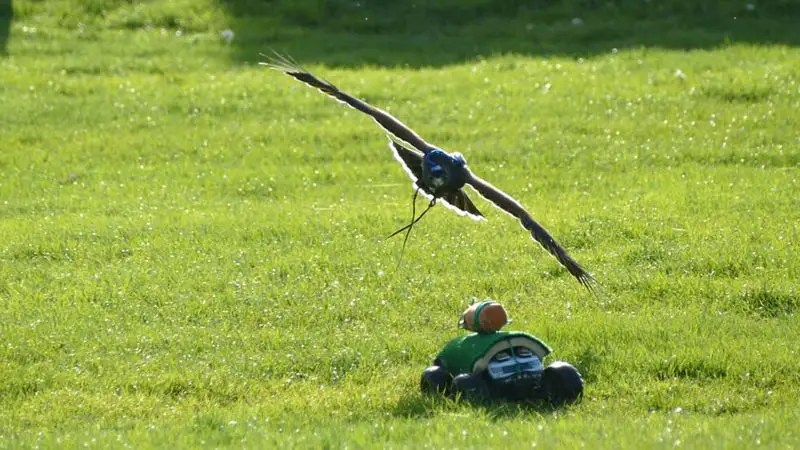In addition to the more traditional models, new drone models designed for specific uses have proliferated in recent years.
Imitating the anatomy of birds, mainly their wings and their ease of movement, these models could be used to respond to emergencies or to hunt other drones that represent a security threat.
Drones inspired by birds
The GRIFFIN project, led by Professor Aníbal Ollero, an electrical engineer at the University of Seville in Spain, seeks to create prototypes of highly autonomous and ultralight robot birds, capable of minimizing energy consumption in flight, landing on curved surfaces, and performing tasks with mobile limbs and artificial beaks.
To achieve this level of efficiency, the project aims to use wind and air flows to its advantage and interact intelligently with people and the environment.
Other outstanding advantages, in addition to the potential for energy efficiency, are the reduction of noise during flight and the reduction of possible accidents, due to the absence of propellers and the predominance of lightweight materials.
Initially, the remote rescue of injured people, taking biometric measurements, and even the application of a mask in risky contexts for direct assistance are projected as uses for this technology.
Other uses foreseen for this technology is the so-called “contact inspection”, in industrial areas for cases involving, for example, the presence of gases or corrosive materials, which could be evaluated or treated using this unmanned robotic vehicle.

The first tests carried out with this robotic bird have managed to execute flight routes both indoors and outdoors, successfully testing its ability to land on a square platform measuring between 20 to 30 centimeters wide.
The team behind the GRIFFIN project is to continue perfecting this technology. The next challenges involve perfecting landing in curved areas, improving the gripping system for a more versatile one, and integrating machine learning mechanisms to enhance these tools.
“What we want to demonstrate are these combined capabilities: being able to fly while saving energy, being able to land, and being able to manipulate its limbs like a bird,” Ollero commented on this aspect.
Other tasks on the agenda for this team are focused on the coordination of all the functions involved in the operation of this specimen, polishing complex aspects such as the transition between the flapping and the displacement of this vehicle during flight, as well as its reading and dependence on environmental fluctuations, which concentrate an important share of unpredictability.
Thanks to the existence of miniaturized components, the weight of this unmanned vehicle is quite low, a condition that limits its load capacity. Although this aspect could also be worked on in the future, these “birds” can carry doses of medication and have computers and cameras integrated onboard, as a support for visual navigation.
Although projections point to 2030 as a possible take-off period for this technology in practical uses, this first report presents us with a new model that, if sufficiently consolidated, could begin to circulate.
The report on this project was published in Horizon, the scientific journal of the European Union.





